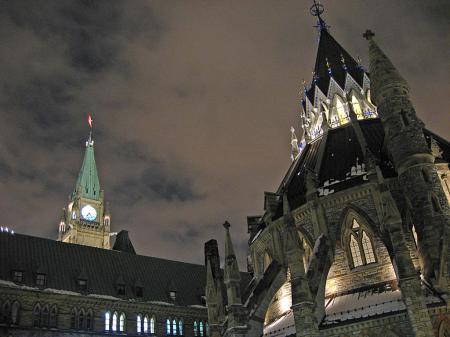
When it comes to reducing greenhouse gas emissions, there is a spectrum of costs associated with different options. At one extreme are measures that can be taken that would both save money and reduce emissions. At the other end are options that would reduce emissions somewhat, but only at very considerable cost. A McKinsey study discussed here previously included such a spectrum for emissions in the United States: ranging from savings of $90 a tonne for improving the efficiency of electronics to costs of $90 per tonne for hybrid cars. Doubtless, even higher cost options exist.
Domestic trading
Domestic carbon trading is meant to ensure that the cheapest reductions occur first. In the case of win-win options, the fact that a change hasn’t happened yet may reflect a lack of information, a disjoint between who is making the decision and who is paying the cost, capital stock turnover delay, or some other obstacle to action. Trading systems that grant credit for reductions could conceivably help overcome these sorts of problems, but the real purpose is to allow a company that can only cut emissions for $200 a tonne to pay $45 a tonne to somebody who can cut them for $40. That way, polluters pay and the total costs of mitigation are minimized.
International trading
There is certainly some controversy in such domestic systems, but it is relatively scant compared to the disagreement that surrounds international exchanges. For all sorts of reasons, it makes sense that the price of avoiding a tonne of emissions varies wildly globally: both as the result of different kinds of emitting activities (energy emissions, deforestation emissions, process emissions, etc) and different relative factor prices (especially relative costs of labour and capital). Domestic policymakers are thus presented with an economic logic in which the cheapest way to achieve a particular environmental outcome seems to be paying people somewhere else to do it.
Some people object to this on the basis that it is shipping money out of the economy. There is some truth to this. Forcing domestic emitters to make all their reductions domestically would probably create employment for engineers and others who actually carry out the reductions. At the same time, it is highly likely that permitting domestic reductions only would significantly inflate the cost associated with any particular emission reduction target.
While there are lots of legitimate concerns about fraud, measurement, and defining additionality, it seems pretty essential that a large-scale global transition towards a low-carbon economy will require very large international transfers. That is not to say that the US should just pay China to cut emissions by an amount equivalent to X% of American emissions, leaving things at that. The Chinese are already above sustainable levels themselves and will need to make unprompted cuts – either domestically or through trading – if global targets are to be met.
All this is quite aside from the question of compensation for historical responsibility – it is just a question of pragmatism and economics. Giving states the flexibility to mandate cuts at home or induce them abroad creates the best chance of large overall emission reductions; as such, politicians need to stop letting legitimate concerns about proper accounting serve as a cover for a kind of self-destructive protectionism, international trading systems should be designed to be as effective and efficient as possible, and voters should acknowledge the economic realities of carbon abatement.







